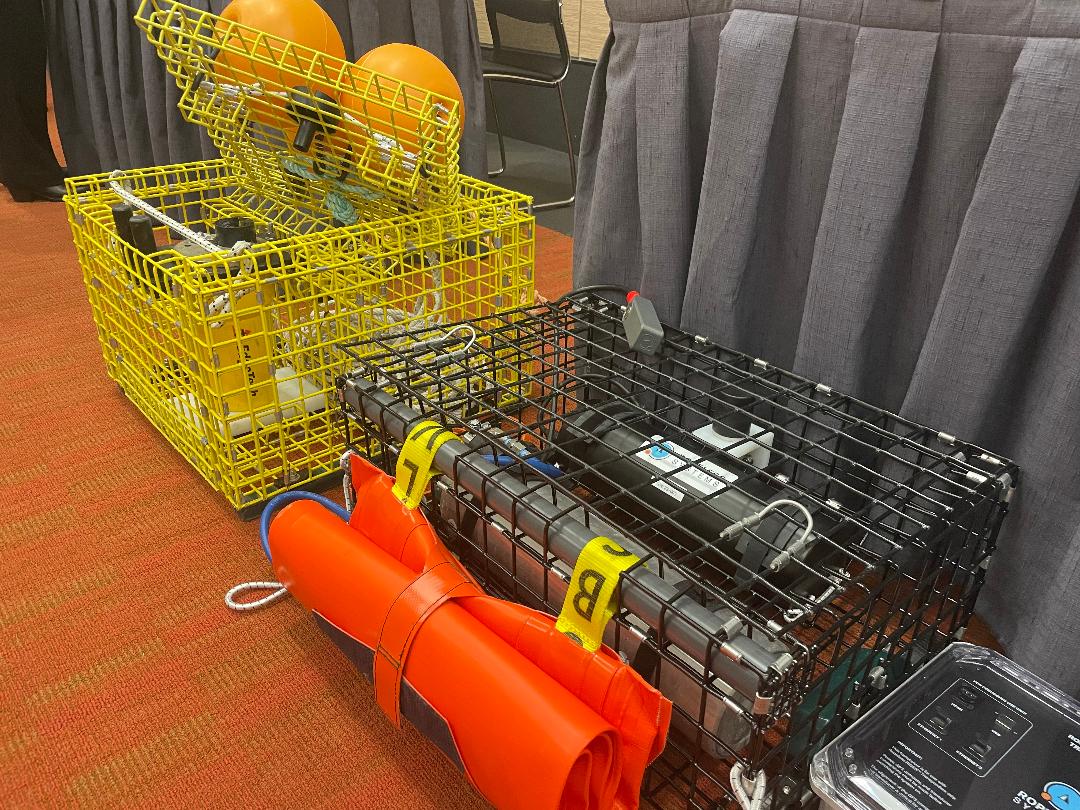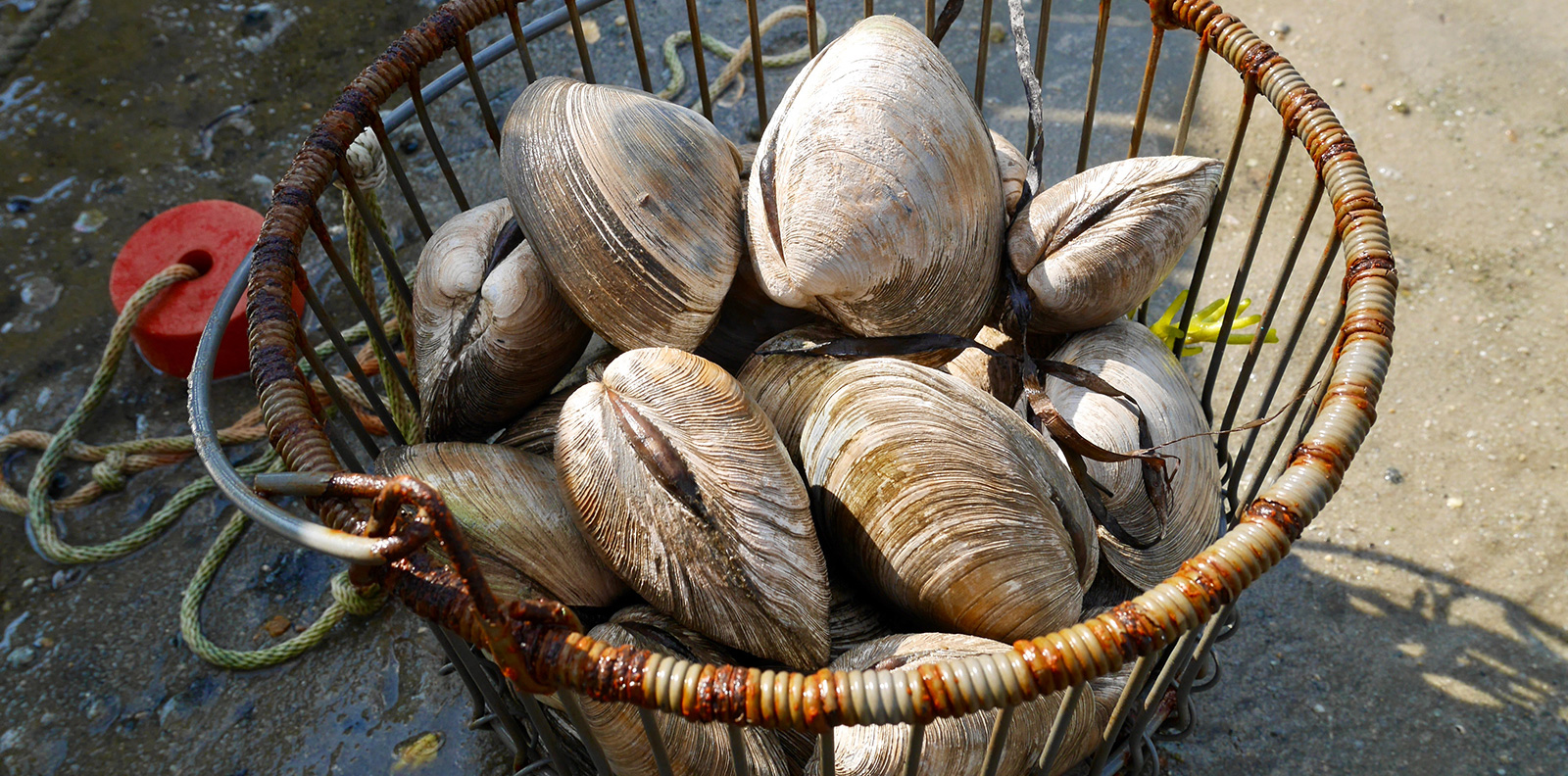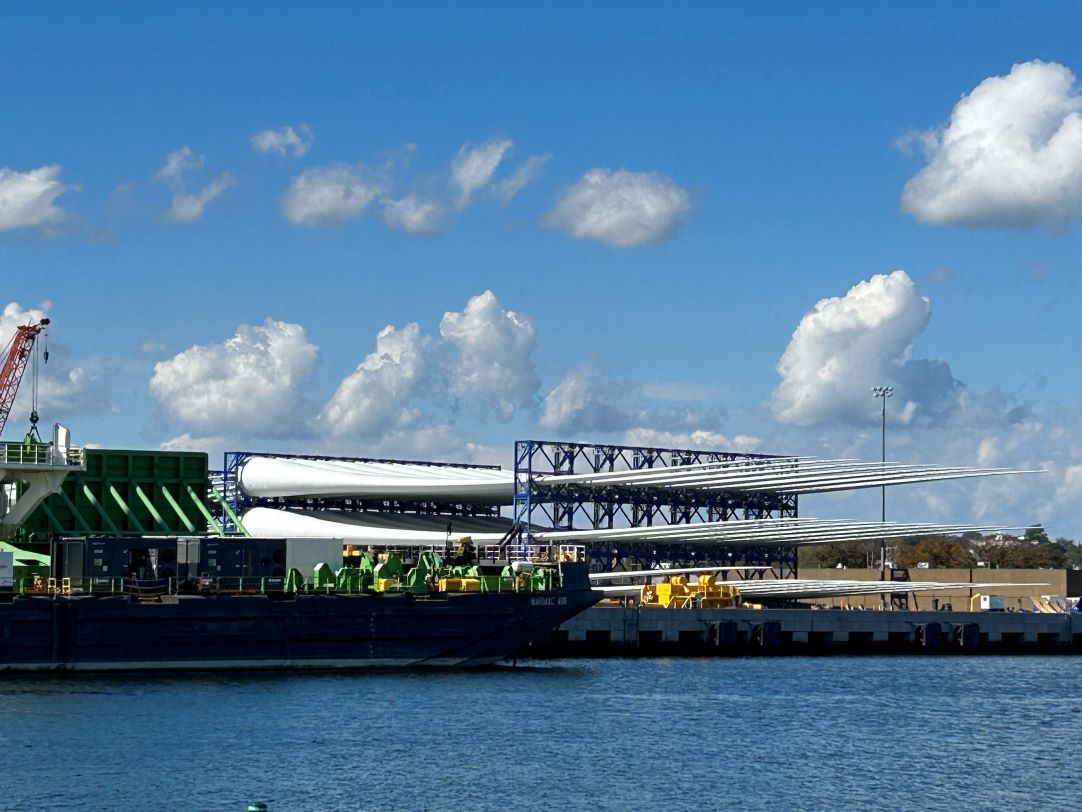RWU Professor Energized by Solar Fish Farm
August 13, 2012
ROCHESTER, Mass. — Dale Leavitt told me to meet him at the 7-Eleven in this small town of about 5,000. I wouldn’t be able to find the fish farm on my own, he said. “It’s way out in the woods — it would be impossible.”
He pulls up in a pickup — a cheerful, mustached man with slightly wild silvering hair. He wears a weather-beaten baseball cap and T-shirt, both advertising the marine biology program at Roger Williams University, where he teaches part time. He has blurry tattoos on his forearms, including one of a cartoonish, polka-dotted octopus.
Leavitt grins at me in the hot midday sun. “You need a cold drink? No? Okay,” he says. He climbs back into his truck and I follow him down Route 28, until he veers into forest. Soon we’re rolling slowly down an unpaved track, just rutted wheel marks with grass tufting up between them. Golden dust billows up from our tires so thickly I can barely see. We leave the woods for a vast open space: cranberry bogs, I’ll soon learn, where a network of dusty roads lace through the wet lowland.
Leavitt parks on a little scrap of solid ground amid the bogs, where a murky pond and a bank of solar panels are the only clues to the one-of-a-kind innovation hidden here. But this unassuming exterior packs a punch. Leavitt, cranberry farmer Brad Morse, Roger Williams University engineering professor Charles Thomas and a handful of undergraduate students from Roger Williams University have turned hard-won Environmental Protection Agency (EPA) grant money into a solar-powered, self-cleaning fish farm that may prove two to three times more efficient than conventional fish farms, at scant environmental cost.
These hidden cranberry bogs hold a system that could profoundly impact the future of sustainable food production.
Fish food
We climb out of our vehicles; sun beats down on the bogs, which are subtly terraced so that water flows effectively between them. Big red dragonflies hover in the hot air. A slight wind stirs.
Leavitt — his students call him Dale — is in his element here. He produces a plastic container of what looks like dog food pellets — Purina Fish Chow, actually — and happily leads me over to an unnervingly rickety plank onto a metal walkway over the pond. Weathered boards delineate the 15 6-by-8-foot mesh-sided fish pens.
The 15 6-by-8-foot fish pens are stocked with juvenile largemouth bass. “It’s very impressive to see them feed!” Leavitt promises, sprinkling pellets into a pen. Soon the surface roils with activity: 6-inch juvenile largemouth bass, voracious eaters, which, by fall, will grow into 14-inch, one-and-a-quarter-pounders. Each pen is a module that can be lifted out with a backhoe. The mature fish will be sold at Boston’s live seafood markets or over-wintered for pond stocking this coming spring.
Each pen can comfortably hold 100 bass, though some aren’t yet filled. Soon three of Leavitt’s assistants drive up with more fish in plastic tanks. Leavitt bought the bass as 2-inch hatchlings from a Delaware hatchery last winter; he and his students raised them to their current size in a Roger Williams University laboratory.
Matt Griffin, who works on shellfish restoration at the lab, dons rubber boots and waterproof coveralls so he can stand in the waist-deep pens. Joel Lashomb, a rising junior and marine biology major at Roger Williams, and Danne Elefante, a recent graduate, move the fish from tanks to pens with a net.
“We got a dead one,” Lashomb reports.
“Just one?” Leavitt asks
“Should I throw it …?”
“No, no,” Leavitt says. “Go bury it. Give it a burial. Give it a fish burial. Over there on that side.” The quaint ritual is actually to outwit otters, which can be troublesome predators.
Multipurpose bog
Usually, farmer Morse is here, too, chumming with Leavitt’s students, or tending the fish and cranberries. He’s out today, but this enterprise owes its beginnings to a struggling late-1990s cranberry market that left Morse searching for other options. Morse is a fifth-generation grower who has farmed the 65-acre bog surrounding us since 1971.
By 1999, cranberry prices were so depressed that many farmers feared selling their land for development was the only viable option. But Morse had another idea.
“I was looking for ways to diversify,” he says in a telephone interview. He connected with the Massachusetts Department of Agriculture, where Leavitt then worked as an aquaculture extension agent. Leavitt found funding to help Morse launch a fish farm, and the two became good friends as they worked together on an elegant partitioned aquaculture system, kept clean by phytoplankton.
It was a two-pond design: one pond for the fish, with water circulating by paddle wheel through a wider, shallower pond — a converted cranberry bog — where naturally occurring algae absorbed fish waste from the water. An aerator gave the needed oxygen boost.
The farm was “a learning curve,” Morse says, but it supplemented his income until the cranberry market recovered. The project’s Achilles’ heel, however, was its fuel consumption. The bog is too isolated for an electricity connection; a diesel generator powered the paddle wheel and aeration.
In 1999, diesel had cost 76 cents a gallon. By 2006, it was well over $3. The fish were no longer profitable; Morse converted the filtration pond back to cranberries. Leavitt turned his attention to other things.
But Leavitt’s passion has never strayed too far. He joined the Roger Williams University biology department and continued doing aquaculture outreach, advising new oyster farmers and even designing a solar-powered shellfish growing system. His lab also grows oysters for restoration of Narragansett Bay.
In 2008, Leavitt called Morse to say, “Brad, I’m ready to start fish farming again.”
This time, Leavitt had a different plan. He applied for an EPA grant to work with undergraduates in developing technology for sustainable living. Morse was more than willing to get involved.
“It’s a lot of fun,” Morse says, of growing fish. “It’s the biggest fish tank of all.”
Morse, Leavitt, and Thomas worked with a team of senior engineering students to “completely revamp the concept” of the fish farm. They modeled the new system on the flow dynamics of an automobile turbo-charger — a lucky stroke of inspiration from a student. They designed a single-pond system, with waist-deep fish pens on one side and a shallow, 18-inch algae filtration area on the other; algae need plenty of sunlight to photosynthesize fish waste, so depth matters. A single pump would aerate and circulate the water, and the whole pond would only be a quarter acre.
Eighteen 200-watt, 24-volt solar panels power the fish farm’s water pump.Goodbye diesel. They were going solar.
The grant process was competitive. They drew up a proposal that won $10,000 for planning, then presented the project to the EPA in Washington, D.C., competing with undergraduate groups from around the country for the $95,000 implementation grant. They not only won the grant, but also were invited back the following year to share their progress.
Morse dug the new pond, which they lined with heavyweight woven plastic and filled with groundwater. To run the pump, they installed 18 200-watt, 24-volt solar panels, which feed a bank of nine 24-volt battery systems protected from the elements inside a shipping container. Leavitt is frustrated with the current pump, whose capacity he doesn’t know precisely. But he and his students have designed, and will soon install, a more effective pump that he says will move 700 gallons of water a minute.
Bog of life
Leavitt is enjoying himself here. He stoops and catches a dust-colored, half-inch toad, and holds it out in cupped hands. He then spots a better prize: a small turtle in the pond’s filtration area, poking its head above the surface like a periscope.
“Hey, Joel, go get a net and catch that turtle,” he tells his student Lashomb.
“Why?” I ask naively. “Is it a predator?”
“Oh, no. There’s a koi pond behind the research building on campus. I’d just love to get some native turtles in there,” Leavitt says.
Lashomb is stalling. “There he is again, Joel! See him? Right there!”
Lashomb, with the net, walks the perimeter of the pond. “Watch out!” shouts Leavitt, grinning. “He might be a 20-pound snapper. That might just be the tip of his nose.” To me, he says, “He’s gonna slip and fall in. Don’t tell him I said that.”
Lashomb doesn’t fall in — and he doesn’t get the turtle — and soon it’s time to work. Leavitt and his three assistants go from pen to pen, corralling fish into a corner and netting them in groups of six, which are quickly weighed, measured and released.
Griffin stays dry in his waders, but Lashomb and Leavitt are waist-deep, in bathing trunks. Lashomb hops around as the fish swarm his legs. The water, though murky, has no smell. The phytoplankton are doing their job.
Leavitt jokes with his helpers and talks sternly to the fish as he measures them nose to peduncle, the last fleshy part of the tail before the fin starts. “Easy,” he tells the fish. “If you stop struggling, you’ll get out of here much more quickly.”
Between measurements, Leavitt surveys his watery green domain. “We’re going to start growing hydroponic veggies on floats,” he says. “I can envision this thing being lined up with floats of plants next summer. But that’s just kind of a lark.”
The fish production, though, isn’t a lark. It’ been meticulously planned, and though this is the farm’s first year in operation, Leavitt is confident. “We had done our homework” the first time around, he says, noting that he expects they will break even with feed costs and sales this year.
“The potential’s there to do well,” Morse says.
Eliminating the waste
At the end of the year, they will write a final report to the EPA, and privatize the farm, transitioning it from research project to business.
No one has ever run a system like this on solar power, they say. The design itself is cutting-edge. The key is its ridiculously efficient waste removal; the partition system, in fact, was first designed at Clemson University, in South Carolina, for sewage treatment. Clemson researchers later made the jump to aquiculture, but the system is still little used by mainstream fish farmers.
While fish farming comes under frequent fire from environmentalists, marine farms take most of the heat. Net-pen salmon farms, for instance, have been roundly criticized for the high quantities of waste they release into the ocean. And escaped fish may bring the diseases of captivity with them into the wild.
Leavitt notes that contained freshwater operations — the most common in the United States are catfish farms — have a lower ecological impact. But waste management also troubles traditional freshwater fish farmers. As anyone knows who has killed a childhood goldfish by neglect, fish are poisoned by high levels of their waste in water.
Though vaccination has helped taper off the use of antibiotics in farmed fish, unhealthy fish are more likely to be medicated. And a farmer’s ability to keep ponds clean is often a chief limiting factor in the quantity of fish that can be raised healthily.
Traditional farmers struggle to find feed that will reduce toxicity in fish waste. Some farmers drain their ponds annually; this water must be managed carefully or it can cause environmental harm. Other farmers install mechanical filtration and waste removal systems. But Morse and Leavitt’s can more than triple a fish farmer’s output, while keeping water clean.
“In a natural pond, you could get 500 to 1,000 pounds of fish an acre; with this system you can get 1,000 to 15,000 pounds of fish,” Leavitt says. The quarter-acre pond may produce up to 1,875 pounds of fish this year.
Leavitt is well positioned to spread the word. Busily connected with farmers and researchers across the nation and worldwide, he’ll present a paper on sustainable fish farming at an upcoming World Aquaculture Society meeting. He casually mentions a friend who farms tilapia in Haiti, an aquaculturist visiting from Tasmania and a D.C.–based company he knows that is considering solar-powered fish hatcheries.
While Leavitt admits the high-protein fish feed can be a limiting factor, he sees promise for his system, at a similarly small scale, in developing countries. The pond in the cranberry bog is small and shallow enough that it could be achieved with hand labor. And solar technology is getting cheaper all the time.
“Somewhere down the road, we might take this out and do a demo project somewhere that it has a lot more meaning than growing a few largemouth bass in Massachusetts,” he says.
And with final, scolding words for the last fish he’ll measure today — “Stop splashing. And stop biting the net!” — Leavitt splashes to shore, climbs into his pickup and guides me along the maze of little roads out. Looking back at the forest buffering the bogs and fish farm, you’d never even know it was there.
Categories
Join the Discussion
View CommentsRecent Comments
Leave a Reply
Related Stories
Your support keeps our reporters on the environmental beat.
Reader support is at the core of our nonprofit news model. Together, we can keep the environment in the headlines.
We use cookies to improve your experience and deliver personalized content. View Cookie Settings




This is what is needed to sustain both agriculture and aquaculture. By combining their needs and devising a common solution to their problems we now have a more efficient cranberry bog and an aquaculture facility. The possibility of expanding the facility to accommodate hydroponic farming shows continued innovation. Coexistence is profitable and proves that when people pull together rather than against each other amazing things are possible!